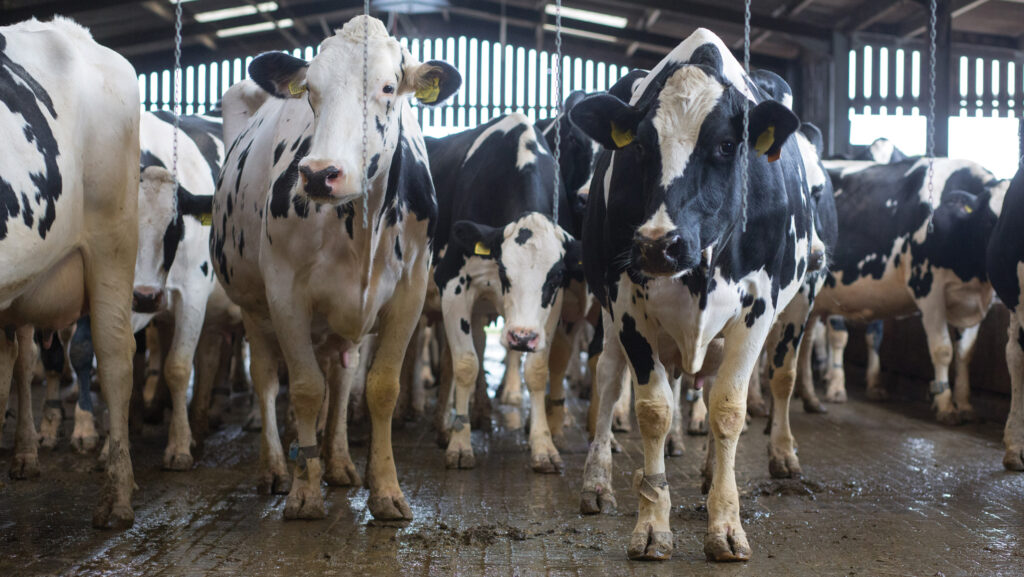Sole ulcers in dairy cattle: Risk factors and how to reduce them
 © Tim Scrivener
© Tim Scrivener Sole ulcers persist as one of the major causes of lameness in dairy cattle in the UK. For both animal welfare and economic reasons, minimising the incidence of these cases is important for the industry.
After the long, hot summer of 2025, farmers and foot trimmers are likely to see a rise in the number of sole ulcers during the autumn.
Heat stress is a key causal factor, as cows stand for longer to lose heat more effectively.
See also: How cow-controlled climate ventilation can reduce lameness
About the author

Laura Donovan is a vet with Nantwich Farm Vets. Her main areas of interest are cattle surgery and infectious diseases, including BVD and Johne’s.
Here she offers advice on sole ulcers in dairy cattle.
How do sole ulcers form?
Sole ulcers occur when the pedal bone sinks and rotates within the hoof capsule, leading to pinching of the tissue that grows the sole.
This leads to damage of the blood vessels and the production of poor-quality horn, presenting a few months later as bruising or ulceration of the sole.
Most cases are seen on the outside claws of the hind feet, as these claws bear most of the weight. Cattle with a previous sole ulcer are more prone to subsequent sole ulcers.
What makes sole ulcers more likely to occur?
Calving
The hormones produced around the time of calving relax the support structures in the foot and create movement of the pedal bone.
The rate of sole ulceration in cattle peaks at about two to five months in milk because of this “calving effect”.
Action: Providing deep straw bedding for fresh cows can reduce bruising of the sole in the early days post-partum.
Body condition
The digital cushion in the foot acts as a shock absorber.
Thin cows and cows with excess body condition loss after calving will have a thin digital cushion, which cannot dissipate the forces on the foot effectively.
Action: Monitoring nutrition to avoid thin cows and over-fat dry cows will help to prevent thinning of the digital cushion.
Foot development
Heifers can have underdeveloped digital cushions.
Action: Allowing adequate exercise and access to concrete will promote development of the fat pad. It also helps if bulling heifers can be cubicle trained.
In a recent study, increased age at first calving was associated with an increased risk of sole ulceration in the first lactation.
Standing time
Prolonged standing times for freshly calved cows can predispose them to sole ulcers.
Action: If possible, bring small groups around for milking to reduce standing times and allow them to return to their beds straight away.
Cows should be encouraged to lie down by providing comfortable, available cubicles.
When cows are required for management tasks, such as veterinary routines, those held in a waiting area should ideally have access to feed, water, and space to lie down.
Measures to reduce heat stress will enable cattle to lie down more. Keeping heifers in groups will improve their lying times.
Overgrown claws
If claws are overgrown or the foot angle is shallow, more sole ulcers can occur.
Action: Feet should be examined at 60-120 days in-milk and trimmed if needed.
Can genetic selection help?
Genetic selection can also be used to reduce the incidence of sole ulcers in a herd.
The higher a cow’s lameness advantage (LAdv) predicted transmitting ability, the lower the likelihood of sole ulcers, sole haemorrhage and lameness.
Bulls with a high LAdv should be selected. Female selection can also be used – selection intensity is increased by breeding replacement heifers from heifers or cows with the highest LAdv.
By understanding the multifactorial causes of sole ulcers and implementing practical steps, we can reduce their incidence and improve both welfare and productivity.
